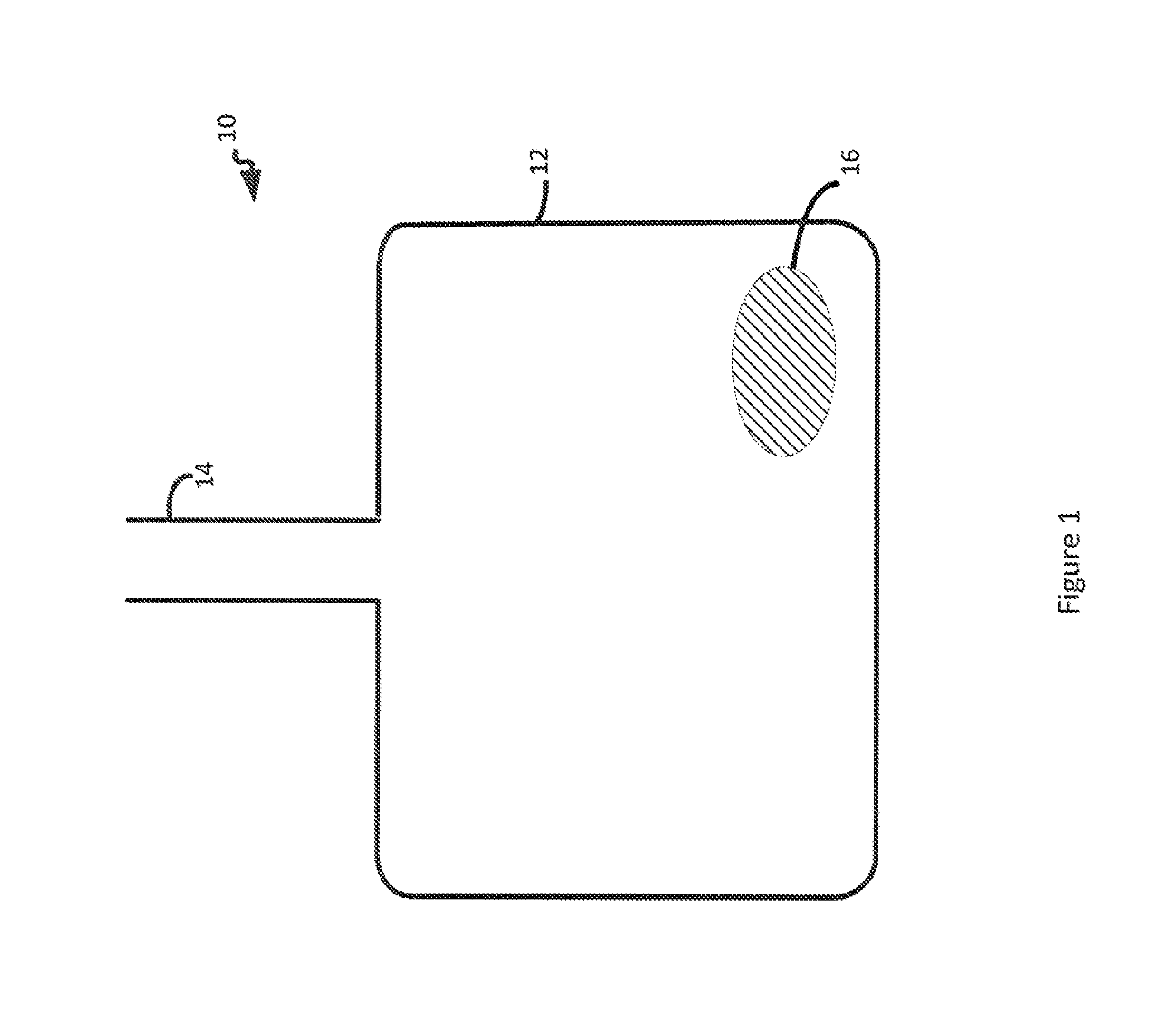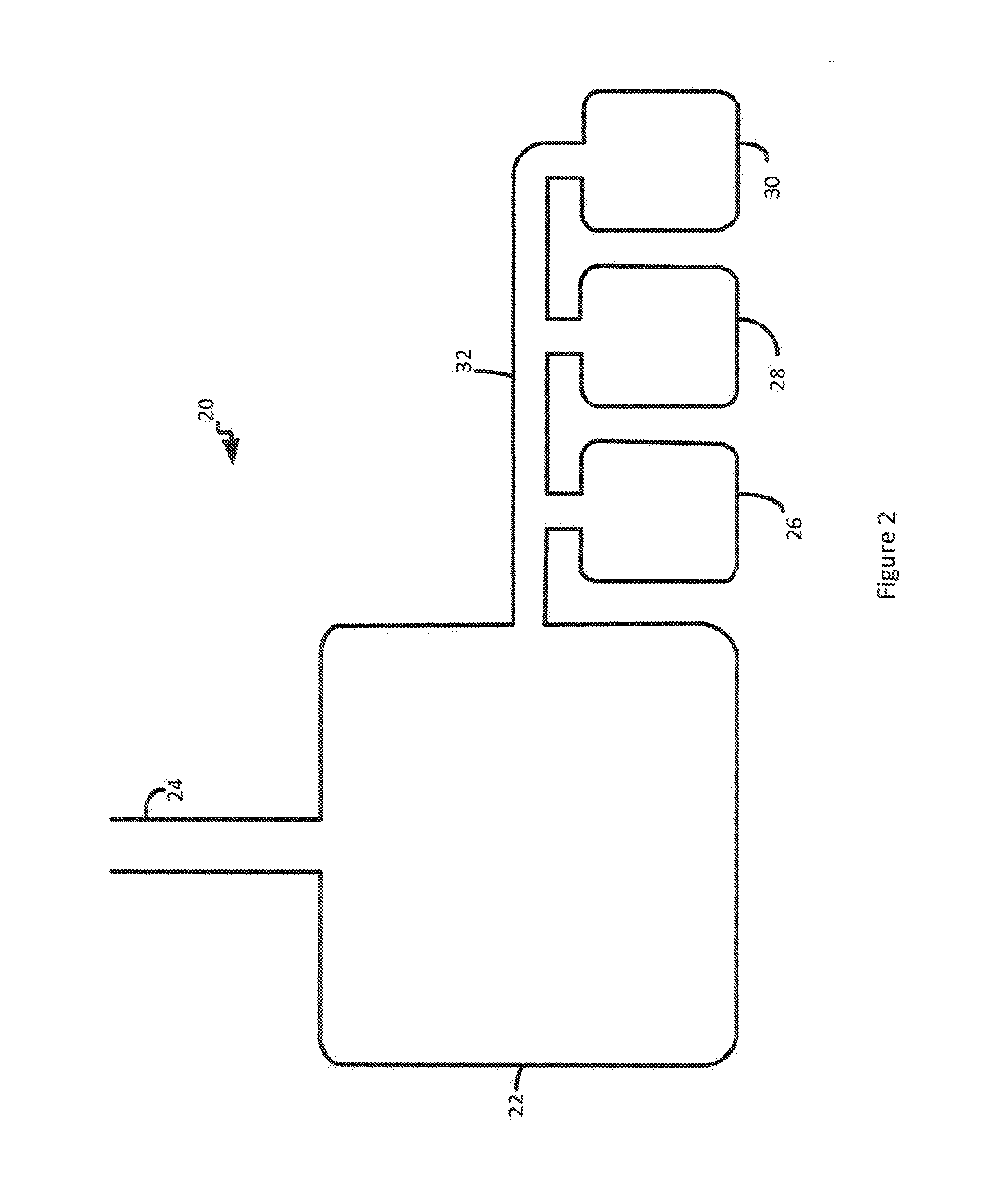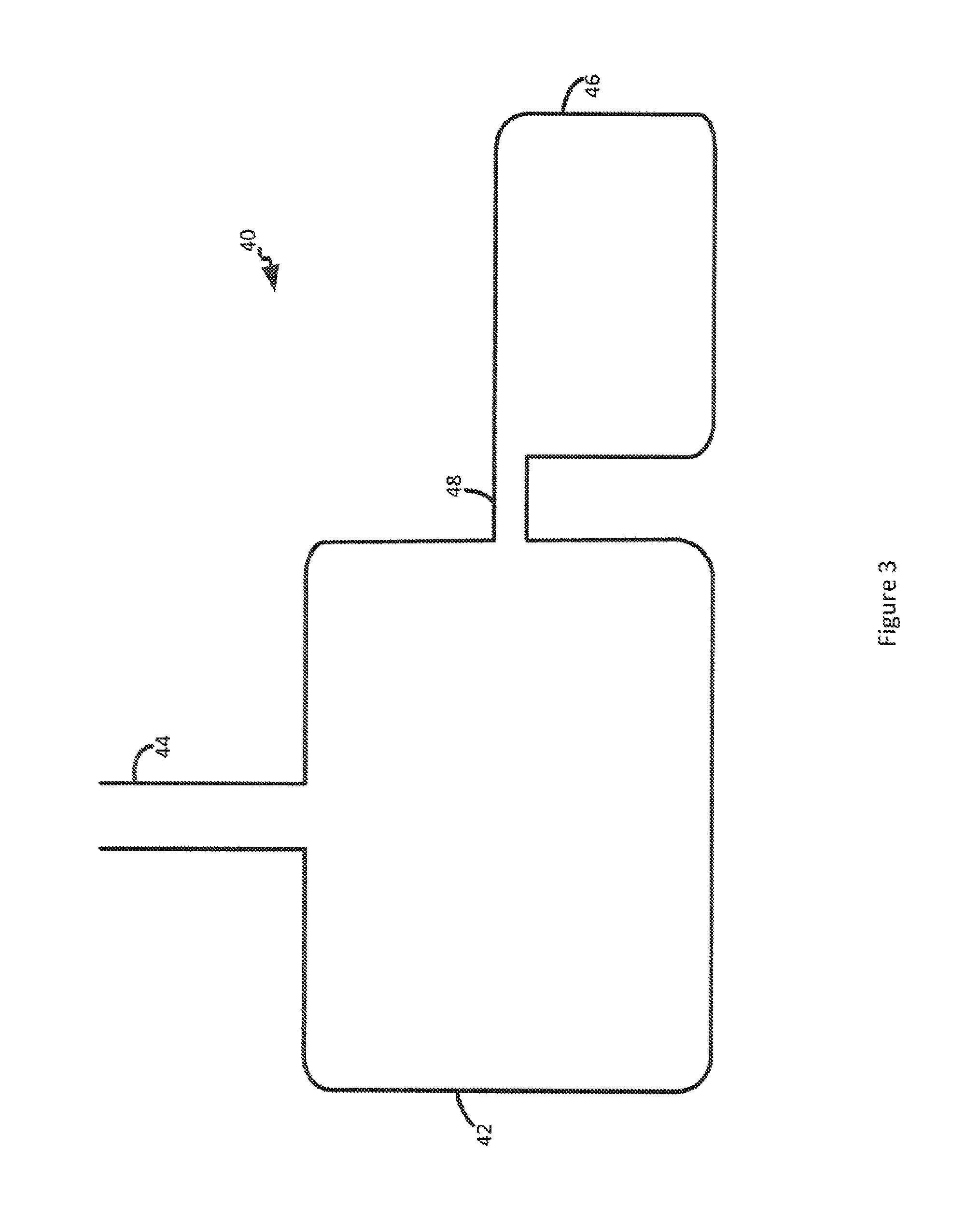Methods and materials for prolonging useful storage of red blood cell preparations and platelet preparations
a technology of red blood cell and useful storage, which is applied in the field of methods and materials involved in prolonging useful storage of red blood cell preparations, can solve the problems of limited shelf life, difficulty in meeting the demand for platelet preparations, and limiting the ability of surviving red blood cell to carry oxygen
- Summary
- Abstract
- Description
- Claims
- Application Information
AI Technical Summary
Benefits of technology
Problems solved by technology
Method used
Image
Examples
example 1
Storing Red Blood Cells in the Presence of CO2
[0081]Red blood cells were collected and processed using standard techniques and stored in standard blood bags. Prior to collecting the red blood cells, an empty blood bag containing anti-coagulated citrate phosphate dextrose with adenine (AS1) was flushed with CO2 for one minute. The collection bag was then filled with blood from a donor. Next, 50 cubic centimeters of CO2 were added to the bag via the sterile docking port. The bag was gently inverted for 30 seconds and then placed upright. Using an empty syringe, the 50 cubic centimeters of air / CO2 was removed from the bag through the sterile docking port. The controls were red blood cell preparations placed in blood bags not flushed with CO2 and not exposed to 50 cubic centimeters of CO2.
[0082]The control and CO2 treated red blood cell preparations were tested for pCO2 (or pO2) levels, lactate levels, glucose levels, and pH levels at days 0, 14, and 21 (Table 1). Storage with CO2 resu...
example 2
Storing Platelets in the Presence of CO2
[0085]Fresh human whole blood was drawn into 3.2% sodium citrate, and platelet-rich plasma (PRP) was prepared. Control citrated PRP was stored at room temperature in a polypropylene tube. CO2 was exposed to the air / fluid interface of PRP using a 99.9% CO2 tank. CO2 was administered for approximately 60 seconds during which time the pH dropped from an average value of 7.4 to 6.4.
[0086]Using a Chronolog 700 platelet aggregometer, platelet aggregation was performed pre- and post-CO2 to ADP, AA, and Epi. Platelet aggregometry was carried out as described elsewhere (Born and Cross, J. Physiol., 168:178-195 (1963)). The assay was performed at 37° C. with a sample stir speed of 1200 r.p.m. Each sample consisted of 450 μL platelet rich plasma. The results are provided in FIG. 11.
[0087]Aggregation was again recorded after reversing the CO2 effect by adding atmospheric air into the PRP until the pH reached 7.2 (FIG. 12).
[0088]In addition, platelet aggr...
example 3
Storing Platelets
[0093]Apheresis donor platelets, collected in PL732 citrate-dextrose-phosphate (CPD) platelet bags, using the Baxter / Fenwal Amicus Apheresis Instrumentation, are obtained in a routine manner following a transfusion protocol. These apheresis donor platelets undergo functional analyses in the presence and absence of CO2 treatment. The following functional parameters are assessed on days 1 (day of collection) and 5 of storage: platelet activation, as indicated by an increase in the level of P-selectin expression; adenine nucleotide content, as determined by ATP levels and measured ATP release using bioluminescence; and platelet aggregation to 20 μM ADP, 10 μM epi, 0.4 mM AA, and collagen.
[0094]The bags (or segment tubes) of apheresis platelets are obtained from Mayo Transfusion Services. Each bag (or segment) of platelets is subsequently divided into a number of equal aliquots. The aliquots are stored on a platelet agitator at room temperature in sterile containers. Wi...
PUM
| Property | Measurement | Unit |
|---|---|---|
| temperature | aaaaa | aaaaa |
| volume | aaaaa | aaaaa |
| temperature | aaaaa | aaaaa |
Abstract
Description
Claims
Application Information
 Login to View More
Login to View More - R&D
- Intellectual Property
- Life Sciences
- Materials
- Tech Scout
- Unparalleled Data Quality
- Higher Quality Content
- 60% Fewer Hallucinations
Browse by: Latest US Patents, China's latest patents, Technical Efficacy Thesaurus, Application Domain, Technology Topic, Popular Technical Reports.
© 2025 PatSnap. All rights reserved.Legal|Privacy policy|Modern Slavery Act Transparency Statement|Sitemap|About US| Contact US: help@patsnap.com



